In recent years, bathroom renovations have leaned towards a more minimalist and serene approach, favoring neutral color palettes and understated designs. Minimalism, which is all about less is more, helps transform the bathroom into a peaceful retreat that prioritizes functionality while maintaining an elegant simplicity. Neutral tones, on the other hand, offer timeless appeal, creating a calm, soothing environment ideal for the most private space in your home.
If you’re considering a bathroom renovation, embracing minimalist and neutral color palettes could be the perfect way to create a balanced, relaxing atmosphere. Here’s how you can incorporate these design philosophies into your next renovation.
1. Understanding Minimalism in Bathroom Design
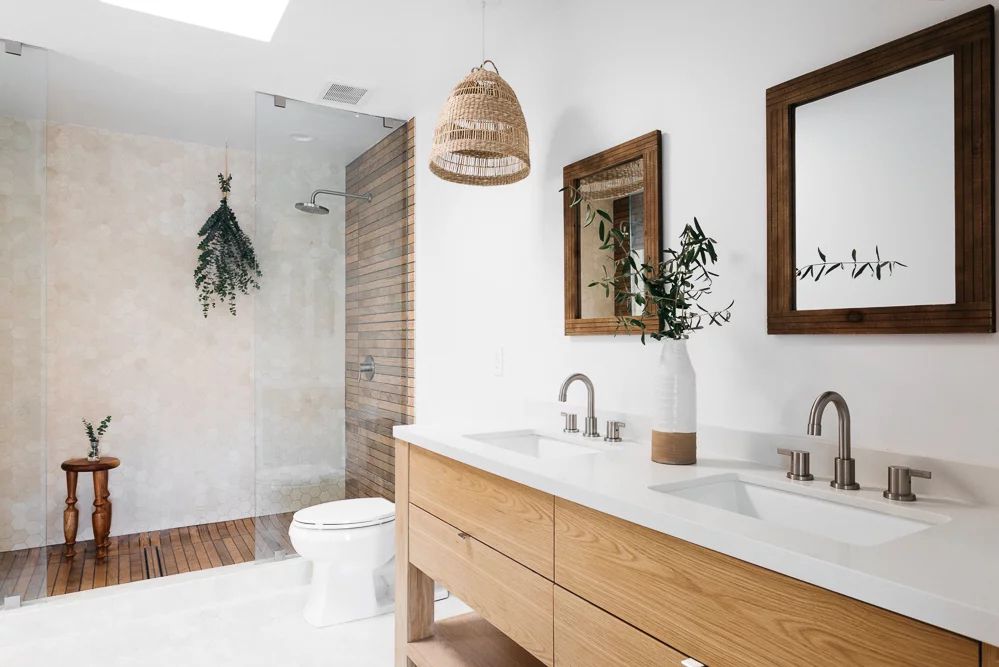
Minimalism focuses on eliminating excess and creating a space that emphasizes simplicity, clean lines, and open spaces. When applied to bathrooms, this means focusing on functional yet aesthetically pleasing elements, where every item serves a purpose and contributes to a sense of tranquility.
- Open Space: Minimalist bathrooms often feature open shelving or floating vanities to maximize floor space and create an airy feeling. Everything in the room should feel purposeful and unencumbered by clutter.
- Clean Lines and Simple Shapes: Choose fixtures with smooth, angular lines. Floating sinks and bathtubs with sleek contours lend to the minimal look, while recessed or hidden storage keeps the room tidy.
- Neutral Tones as a Base: Neutral tones are the foundation of minimalism, providing a muted backdrop that enhances the clean lines and geometric shapes of the design.
2. The Power of Neutral Colors
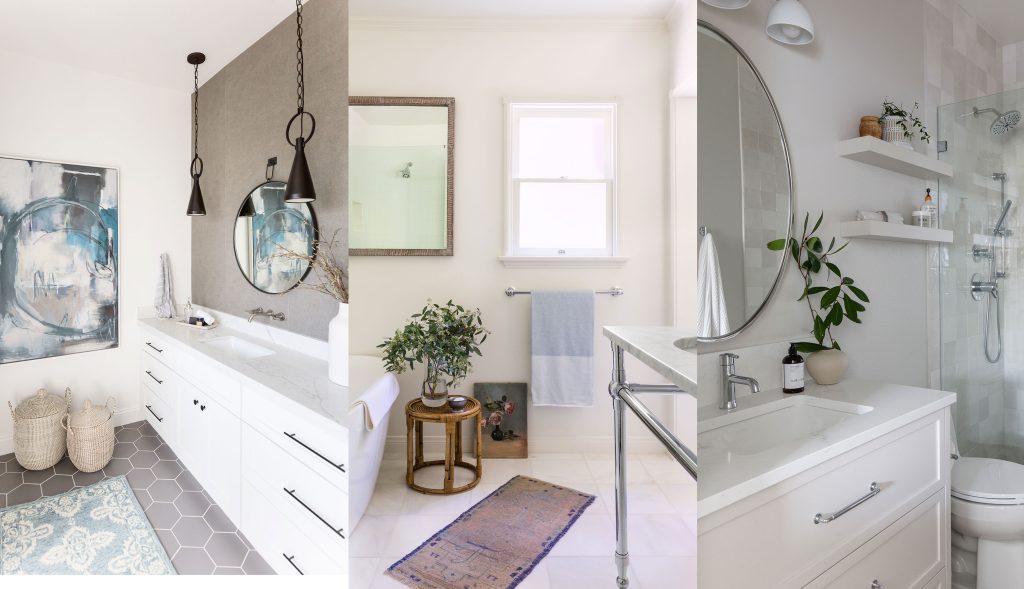
Neutral color palettes are the cornerstone of a minimalist bathroom. Soft shades like white, beige, gray, taupe, and even muted pastels provide a versatile base that exudes a sense of calm and timeless elegance. These hues work seamlessly together and can be used to create a range of moods, from serene and spa-like to warm and inviting.
- White: The ultimate neutral, white reflects light and opens up space, making it perfect for small bathrooms. It offers a crisp, fresh feel while remaining flexible enough to accommodate different textures, materials, and accents.
- Beige and Taupe: For a warmer, cozier atmosphere, beige and taupe tones add subtle richness without overwhelming the senses. These colors are ideal for creating a calm, inviting space, and they work well with natural wood tones or stone textures.
- Gray: Cool grays bring a modern, sleek vibe to any bathroom. Whether light gray for a soft, airy feel or dark charcoal for a more sophisticated look, gray pairs well with other neutrals and can easily be accented with black, white, or metallic details.
- Soft Pastels: Soft tones like muted sage, powder blue, or pale peach introduce a touch of color while remaining restrained and refined. These shades are perfect for those who want a hint of warmth or coolness but without the boldness of brighter colors.
Neutral colors can be used throughout the space—on walls, tiles, and even fixtures. The key is to avoid overwhelming the space with too much contrast or too many competing colors. A unified palette will allow the room to feel harmonious and balanced.
3. Emphasizing Natural Materials
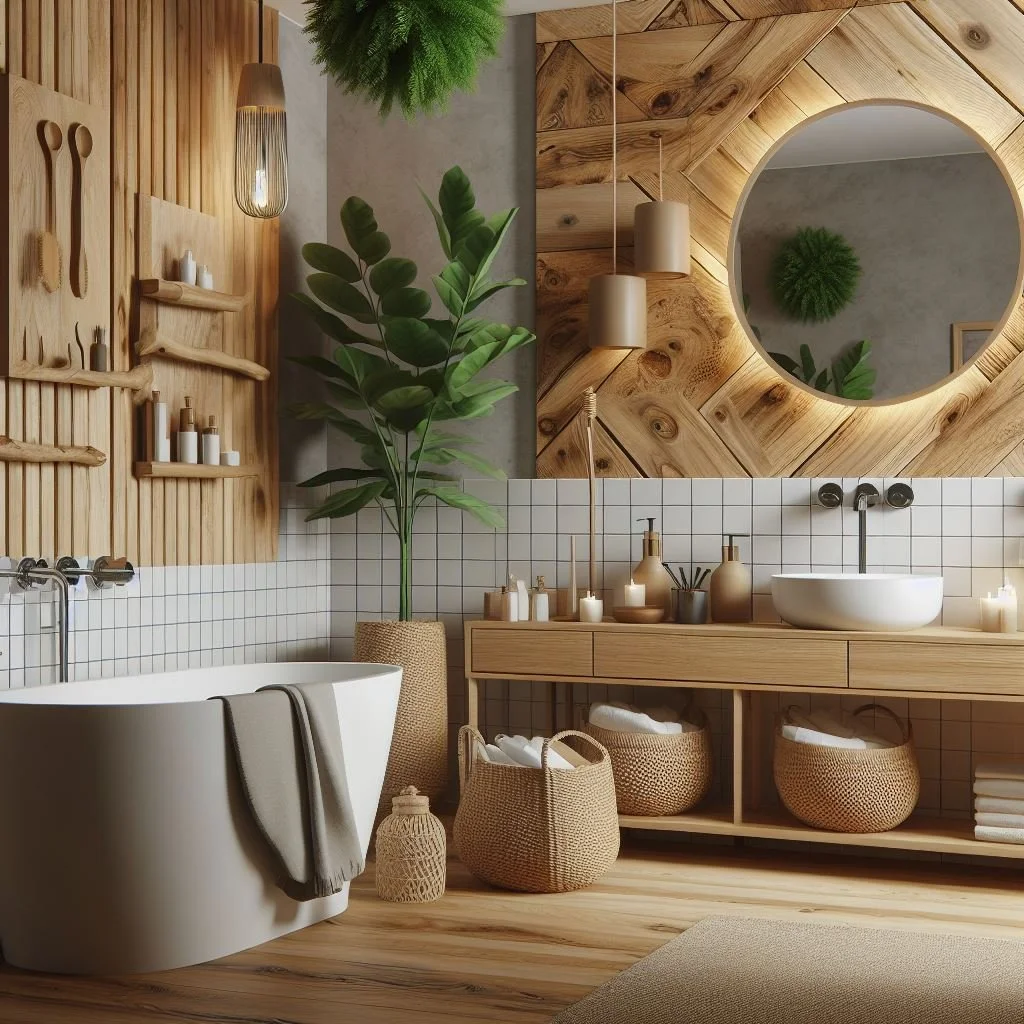
One of the core principles of minimalist design is the use of natural, organic materials that enhance the feeling of simplicity and connection to nature. In a neutral-toned bathroom, materials such as wood, stone, marble, and concrete stand out for their timeless beauty and understated elegance.
- Wood: Light wood tones, such as oak or bamboo, introduce warmth into a neutral bathroom while remaining visually light. Wood accents can be used for shelving, vanities, or even a wooden bathtub surround to create a spa-like atmosphere.
- Stone and Marble: Stone tiles, such as limestone or travertine, offer an earthy feel that complements neutral hues beautifully. Marble, in particular, brings a luxurious, sophisticated touch—whether used for countertops, floors, or shower walls. The subtle veins in marble help introduce a layer of texture to an otherwise clean design.
- Concrete: Concrete is a bold material that, when used in a neutral setting, offers a sleek, modern edge. Whether used in countertops or wall panels, its raw, industrial quality brings a minimalist aesthetic without compromising on style.
- Glass: Clear glass shower panels or mirrors add to the open feel of a minimalist bathroom. Glass reflects light, creating the illusion of more space and adding a sense of transparency and flow to the design.
4. Choosing the Right Fixtures and Fittings

When opting for a minimalist bathroom, the fixtures and fittings should be as simple and functional as possible. The beauty of minimalism lies in the ability to find elegance in the essentials, so avoid unnecessary ornamentation.
- Floating Vanities: These give the illusion of more space by exposing the floor beneath. Choose a vanity in a neutral wood finish or a clean white or gray. Keep the countertop simple with one or two items, like a minimalistic soap dispenser or a small vase with greenery.
- Sleek Faucets and Showerheads: Opt for fixtures with clean lines, such as wall-mounted faucets and handheld showerheads. Matte black, brushed gold, or chrome finishes add a touch of refinement without clashing with the neutral tones.
- Freestanding Bathtubs: A freestanding bathtub is the epitome of minimalist design, offering a sculptural element that also doubles as a focal point. Choose simple, elegant shapes that blend seamlessly into the neutral surroundings.
- Integrated Storage: Use built-in or recessed storage to keep the bathroom looking organized and clutter-free. Floating shelves or cabinets that seamlessly integrate with the wall give the bathroom a sleek, contemporary feel.
5. Adding Subtle Textures and Layers
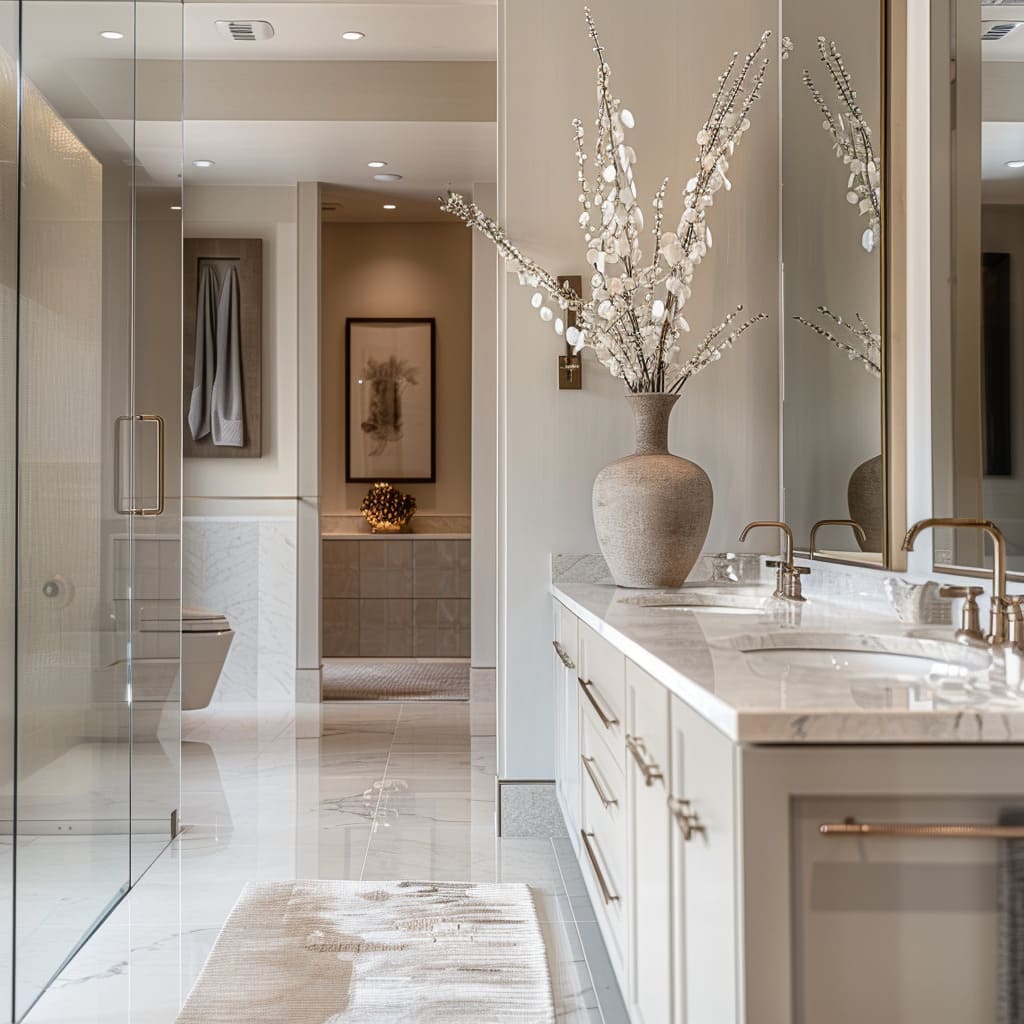
While minimalist design thrives on simplicity, adding layers of texture can enhance the warmth and visual interest of a neutral palette. Subtle contrasts in materials can create a sense of depth while preserving the clean, uncluttered look.
- Textured Tiles: Use matte or textured tiles to add dimension without overpowering the design. For instance, a lightly textured stone tile in soft beige or gray can add richness to the walls or floors.
- Towels and Linens: Choose soft, luxurious towels in complementary neutral shades. A subtle pattern, such as a woven stripe or organic texture, adds interest without disrupting the minimalist aesthetic.
- Rugs: A simple, neutral-toned rug can soften the room’s design and introduce warmth. Wool or jute rugs with understated patterns will blend perfectly into the space.
- Accent Lighting: Subtle lighting fixtures, such as recessed downlights or simple wall sconces, add layers of ambient light without detracting from the overall design. Lighting can be a beautiful way to highlight architectural features or textures in the room.
6. The Importance of Functionality in Minimalism
While minimalist design emphasizes aesthetics, it is also rooted in functionality. A neutral bathroom should prioritize both form and function, ensuring that every element not only looks good but also serves a purpose.
- Efficient Layout: Keep the layout open and uncluttered. Position key elements—vanity, shower, bathtub—in a way that flows easily and maximizes the available space. The idea is to create a bathroom where movement feels effortless.
Quality Over Quantity: Minimalism is about quality, not quantity. Choose a few high-quality pieces (such as a statement bathtub or a premium sink) rather than overcrowding the room with too many elements. This creates a sense of luxury while maintaining simplicity.
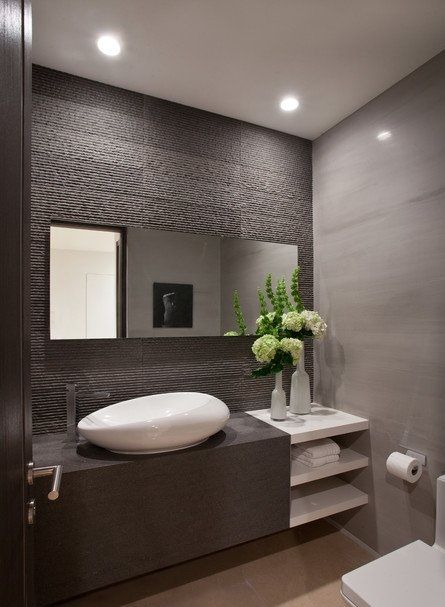
7. The Enduring Appeal of Minimalist and Neutral Bathrooms
Minimalist and neutral color palettes offer a refreshing, timeless approach to bathroom design. By embracing simplicity, natural materials, and subtle textures, these bathrooms evoke a sense of calm and relaxation, making them the perfect personal retreat. Whether you opt for soft whites, warm taupes, or cool grays, the beauty of this design style lies in its flexibility and its ability to adapt to any aesthetic while retaining an air of sophistication and serenity.
In a world that can often feel overwhelming, a minimalist bathroom offers a quiet space where simplicity reigns supreme. By focusing on the essentials, you create a bathroom that feels organized, serene, and, most importantly, timeless.
